Ration D Bar (History, Ingredients & Pictures)
Everyone thinks of candy as a treat that is enjoyed for getting good grades, at the end of a long day, or maybe as part of Halloween fun. There are few people who would think of candy, particularly chocolate candy, as being part of a complete diet or given to help manage nutrition intake. For those who have never lived through times of hardship, this awareness of candy is quite normal.
However, the Ration D Bar is a relic of a time when food was in short supply, and people were struggling to be able to get the nutrition that they needed each day. World War II was a time when many people all around the world were struggling to get the food and nutrition that they needed each day. For the people who survived this conflict, the ration D Bar was the difference between starvation and survival in some cases.
Please leave a review or any memories of this snack in the comments at the bottom of this page. Thank you!
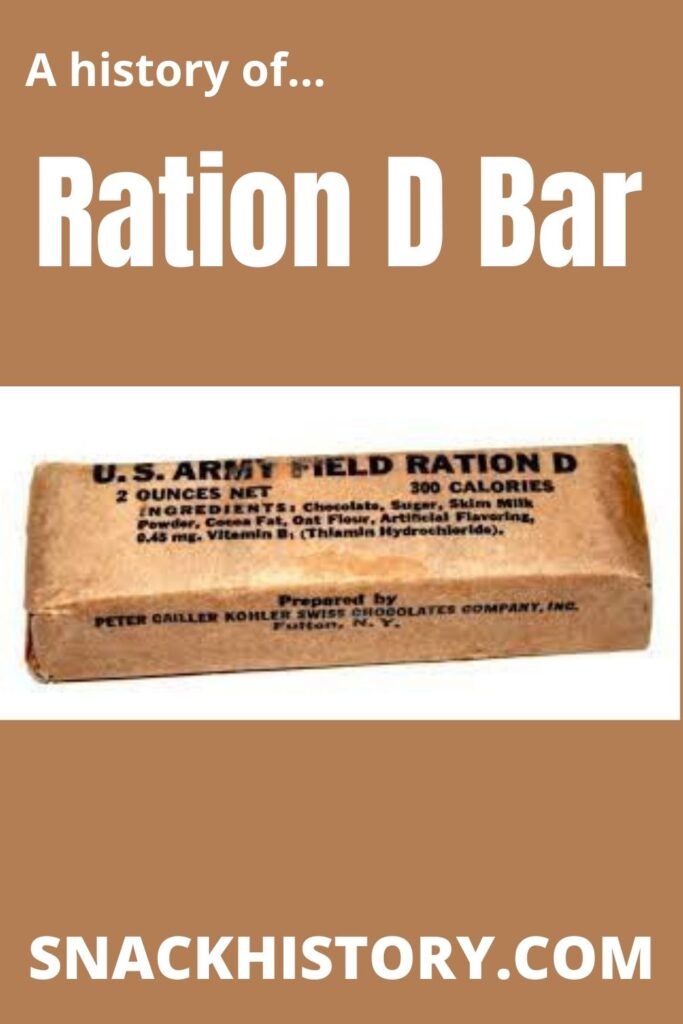
History
The Ration D Bar started being issued to US troops in 1937. Today, military chocolate is still being issued for morale boosts and in daily rations, but in the late 30s, this addition to soldier’s rations was intended to help soldiers to have access to energizing food as needed during tough conflicts. The events of World War I had shown the US and everyone else who was involved that starvation on the front was a very real possibility. When soldiers and units were cut off from their supply lines, they could easily run out of food to eat in a matter of days.
The Ration D Bar was meant to help prevent starvation of essential soldiers, and soldiers were issued this chocolate in varying amounts, depending on the post they were stationed at, the likelihood that they would need these rations to survive, and the size of the company that they were a part of. This meant that some groups would have had quite a lot of Ration D Bars with them when they traveled from place to place. While not heavy, this was a lot of wasted pack space for products that soldiers often refused to eat.
The Hershey Company made the D Bar, and they were the purveyors of most of the chocolate that was being sold at this time in the US. The use of chocolate as an actual field ration meant that this chocolate was quite different from chocolate that was sold for enjoyment to the masses. Emergency chocolate bars like this were made to be high in calories, resistant to melting, and easy to carry. This also meant that they were not nearly as appetizing as regular chocolate.
The first “D Ration” bar was commissioned by Army Quartermaster Colonel Paul Logan. He approached Hershey’s to make the bar and then helped with the information that was needed for the development of the right blend of nutrition to make the bar effective at its job. The bars that were originally commissioned were to weigh 4 ounces total, be high in food energy value, be able to withstand heat without melting, and to taste “a little better than a boiled potato”. The lack of flavor was intended to keep soldiers from being tempted to eat the full ration in one sitting.
To make these specialty bars in high volumes, new machines were made that Hershey used to create the product. The heat resistance that was part of the intended nature of the bar also made the product hard to shape and move through other kinds of candy-making machines.
The four-ounce portions actually had to be pressed by hand because the mix was so dry that the material would crumble when pressed by a machine. The bars were then wrapped in aluminum foil and shipped in cardboard cartons. Three bars were the same as a soldier’s average daily rations and were intended to provide as much as 1,800 calories per day as needed.
By the early 40s, the army was ordering large batches of the D Ration Bar to add to soldiers’ rations. These candy bars also were sold across the borders of various countries like the Philippines, Panama, and even to places throughout the United States. Explorers like Admiral Byrd ended up carrying these bars that would normally have been rationed to soldiers on their expedition to the Antarctic.
When WWII broke out, Congress was going to shut off all candy production during the conflict. This was to save on necessary rations like sugar, corn syrup, and cocoa. However, the army pushed back, saying that the Ration D Bar was needed to support the troops. As a result, this was the mainstay of Hershey’s production during these years. This was great for Hershey’s, but soldiers lamented being given these candy products in place of something that they would much rather have eaten, even when very hungry.
This candy bar was not popular with anyone, most of all soldiers. Many of them actually just threw out the candy that was in their rations because they could not stomach it. “Hitler’s Secret Weapon” was what the candy was called because it caused such intense digestive upset in some people. The bars were so tough to chew that those with dental issues would not eat them either. People with bad teeth had to shave small slices off the bar and suck on them so that they could consume them.
The D Ration Bar was finally improved in the early 40s when the Army Procurement Division went to Hershey’s and asked for a product that tasted good that could still withstand the heat of the Pacific. A new version of the Ration D Bar was born and was added to soldiers’ rations in 1945. Everyone called it the “The Tropical Bar” since it was made for the theater of the Pacific, but it was still considered to be unappetizing and very hard to chew.
In 1957, the oat flour that was used in the original bar was discarded in favor of much more normal ingredients for a candy bar. The entire recipe was reformulated for improved taste and digestion. The Tropical Bar, in its new format, was sent to Korea and Vietnam with troops before the product was again reformatted in the late 80s. This new bar was dubbed “The Congo Bar” and was sent to Operation Desert Shield and Operation Desert Storm Troops.
There have been limited efforts to make chocolate that is military specific in recent years, but they have been a flop. Soldiers are fed so much better these days due to improvements in food preservation processes that the thought of living entirely off candy calories is not appealing to most people. The Congo Bar and the various other versions of the Ration D Bar that were sent to theaters of war around the world were likely more useful to the local people who were given the product in trade for services rendered, for supplies, and to buy silence. The Ration D Bar is probably one of the most unappetizing candy products ever made, and no one who tried one would ever tell you that this product was one they would choose to eat for enjoyment.
For the poor people all over the world who were duped by soldiers trading their disgusting D Ration Bars for better food, this was likely one of the cruelest jokes of all time. The D Ration Bar became nothing more than something fit for the garbage or for trading trickery when trying to get smokes, better food, and cooperation from the locals. The fancy packaging that later incarnations of the D Ration Bar were wrapped in did nothing to improve the overall taste, but they did make the bar easy to conceal from the unsuspecting.
Ingredients:
- Sugar
- Oat flour
- Cacao fat
- Skim milk powder
- Artificial flavoring
- Vitamin B1 – to prevent beriberi
Ration D Bar Goes to the Moon
The Ration D bar also was sent to the moon with the Apollo 15 flight in July of 1971. For a candy that no one enjoyed eating, the D Ration bar was taken along to some of the most momentous historical places and sites of the last one hundred years. This candy bar that no one enjoyed eating was probably carried around to nearly every major conflict or adventure around the world and probably also not eaten at all by anyone on the journey.
This applied to the moon landing as well as the adventurers who took the ration with them. This was such an unpalatable item, and it caused such frustrating gastric symptoms that most people would have gone hungry rather than resign themselves to eating this candy bar. You would have thought that Hershey’s would have made an effort to make this product more palatable overall, but this seems not to have been at the top of anyone’s list of things to do.
Pictures
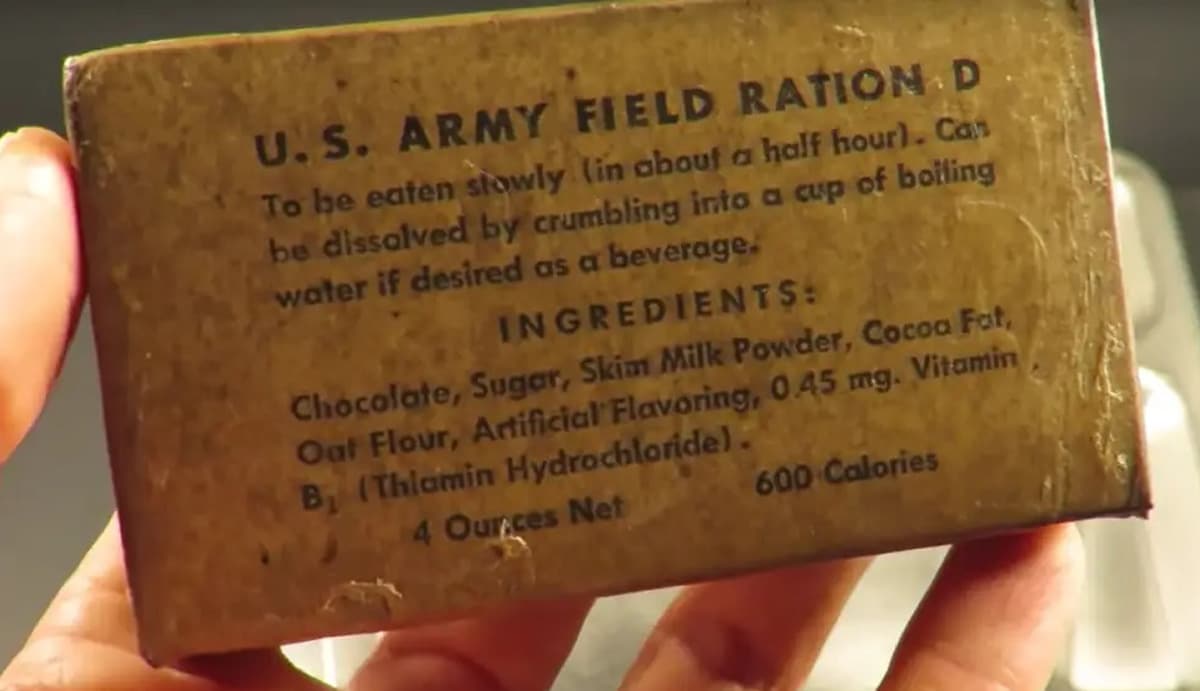
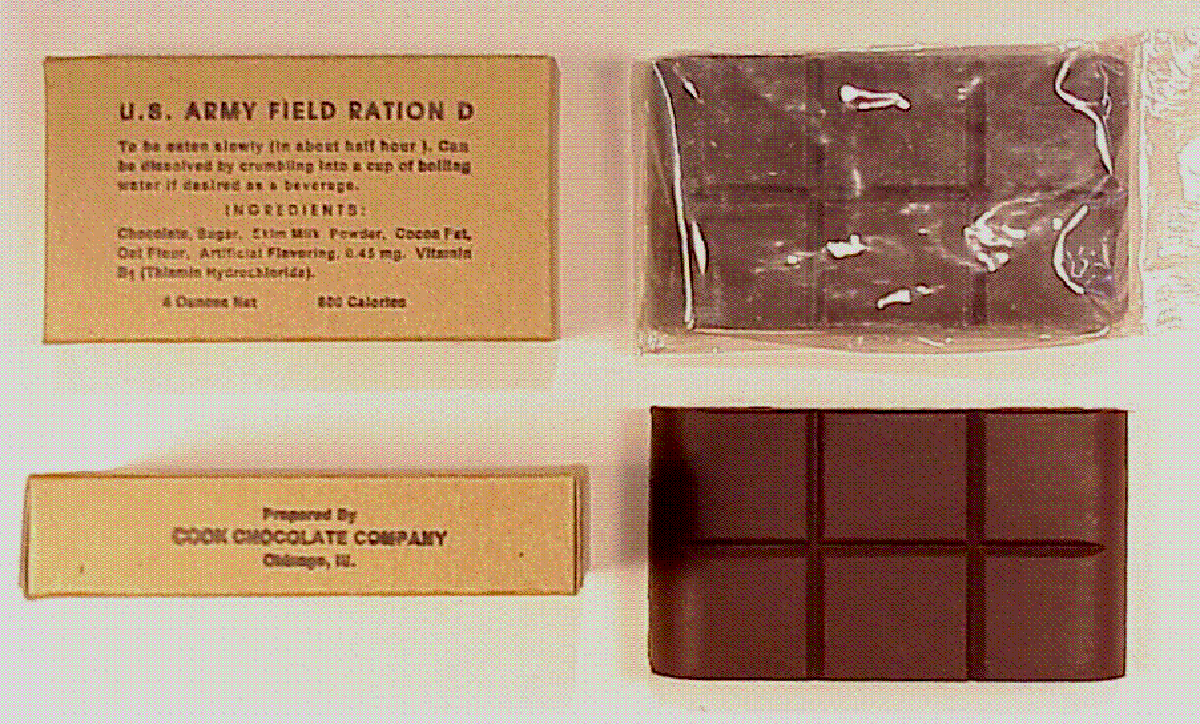
Ads:
A taste test of the Ration D Bar:
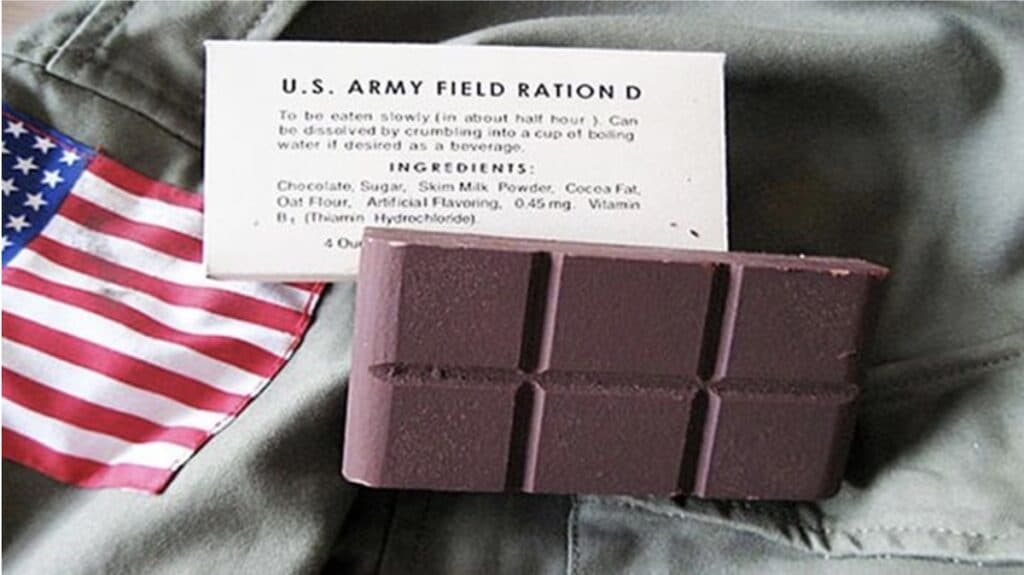
Another view of the packaged item with its instructions:
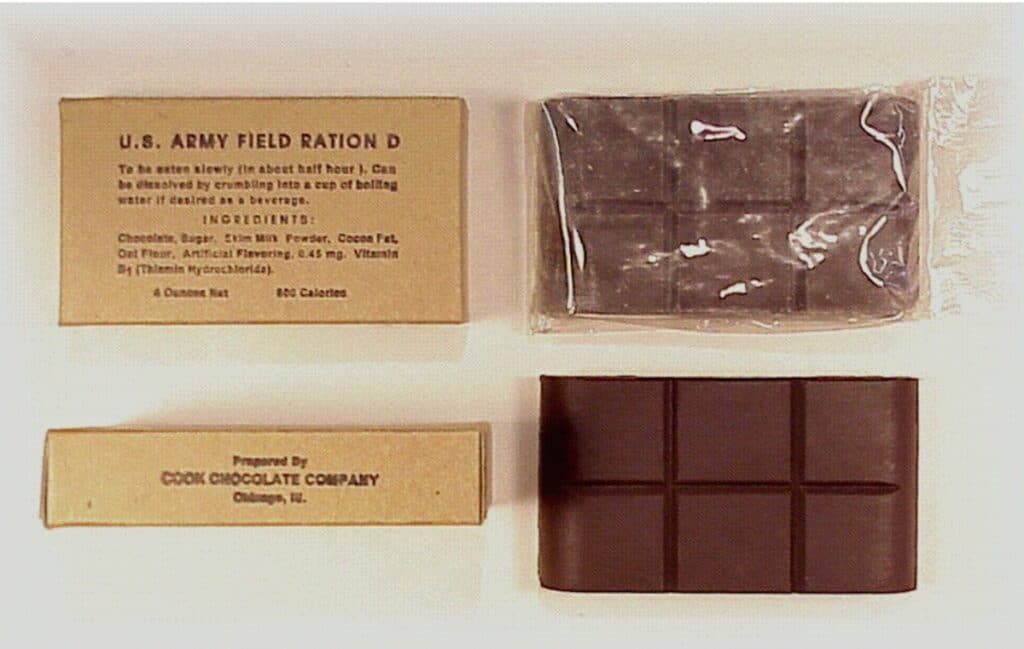

My name is Brianna and I love writing on all topics. Candy history fascinates me and I am passionate about sharing my love of this topic with everyone else!
Please leave a review or any memories of this snack in the comments below. Thank you!
Click here for a full A-Z list of Snacks and Candy
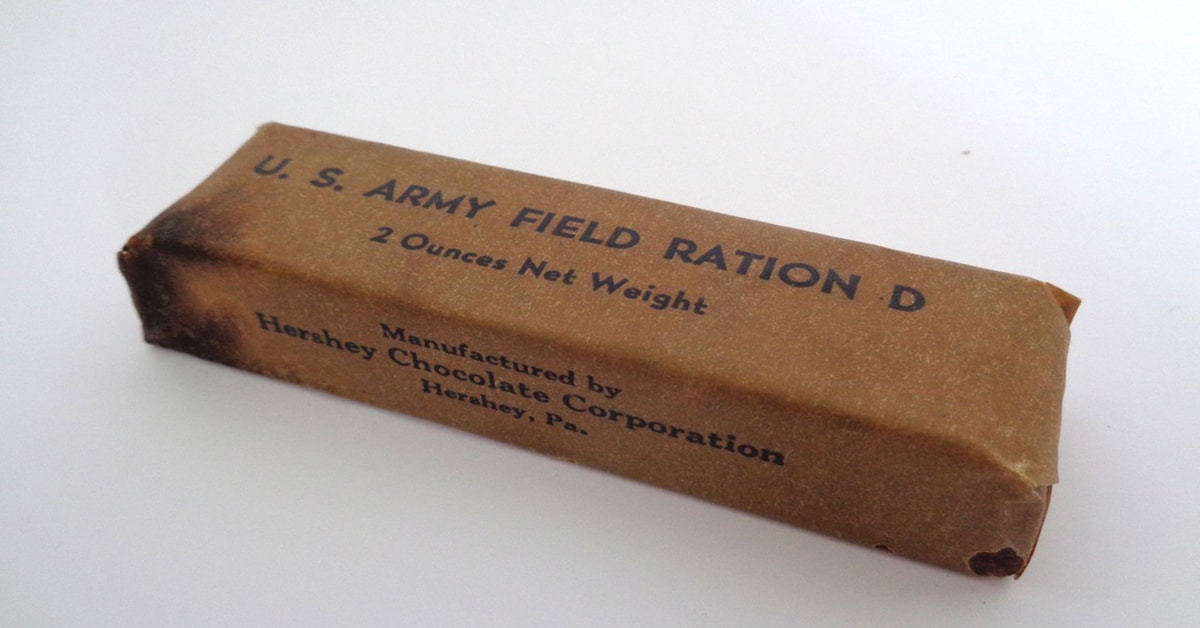
Jason I just read your piece on the history of star bursts and there is a factual error. In the US, the original flavors were strawberry orange lemon and lime. there was no cherry, that came later. lime was the best flavor and it remained in the british version for years after they pulled it here. check it out, you’ll find i’m right! then find a lime star burst. they were amazing. they also used to be a lot bigger but thats a different story
I cant find how to make it um i’m doing a project on it and i cant find directions for Hershey bar! PLEASE HELP! I really need this project done by 2 weeks please contact my email!